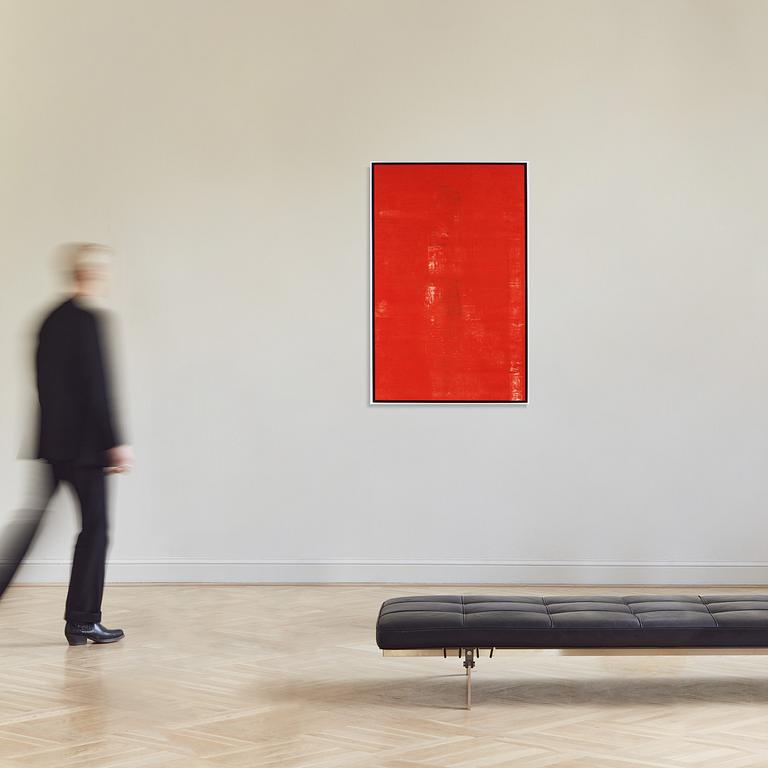Ola Billgren
"Kvinnofigur i landskap"
Signed Ola Billgren and dated -94 verso. Oil on canvas 156 x 100 cm.
Alkuperä - Provenienssi
Stockholms Auktionsverk, Moderna Kvalitén, 4 May 2010.
Muut tiedot
Billgren's paintings are characterized by duality and ambiguity, both in expression and content, and the dreamlike presence is unmistakable. The technique emphasizes this by always moving between the borderland of the realistic and the abstract - where the two opposites define Billgren as an artist.
His oeuvre goes through several phases, or metamorphoses, which are evident in his different periods. The early extreme realist painting later moves towards less representational, culminating in the red period where the paintings are covered with a bright red color that meets the viewer. Billgren chooses to reduce the original image and with the addition of the red, Billgren creates a painting that has found its final form through processes of construction and reduction.
This is how the artist himself expresses it in the catalog that accompanied the exhibition at Galleri Engström in 1996:
The task of painting is to be a discourse on seeing and not to classify natural things. This was at least my starting point when I began experimenting with (quasi-)monochrome painting in cadmium red three years ago. At first, it seemed most appropriate from the point of view of the color experience to refrain from any representational content, but I changed my mind after a period of investigation. I had been attracted to the color red mainly because of its paradoxical nature: it simultaneously delights and attacks, flatters and humiliates the eye. It turned out that the interpretation of this relationship was facilitated by the introduction of an operator in the form of a simple motif, such as a portrait or interior (faces, furniture, etc.), which energetically appealed to the viewer and gave a less peaceful meaning to the observation. In this way, by filling the place of the referent, I hope to say something about visual necessity: about both the will to see and the will to be seen, and also to provide an uncensored version of the symbolic register of the red. In other words, what I am trying to do is to make the color open up semantically through some analysis, so that its more or less given meanings are illuminated in context."
The current catalogue number 'Female Figure in Landscape' from 1994 shows exactly the elements that we recognize from the red period where we see in the background a strongly reduced but still recognizable image of a female figure.











































